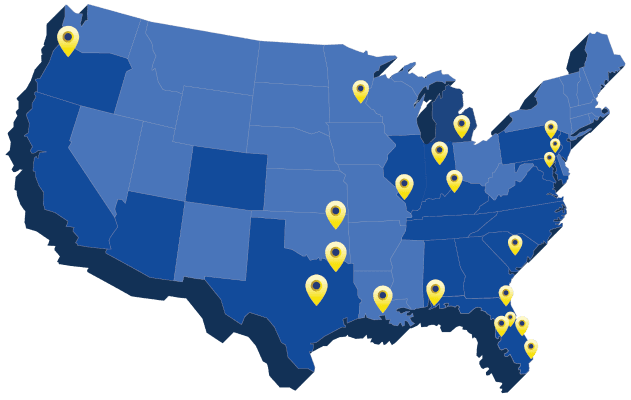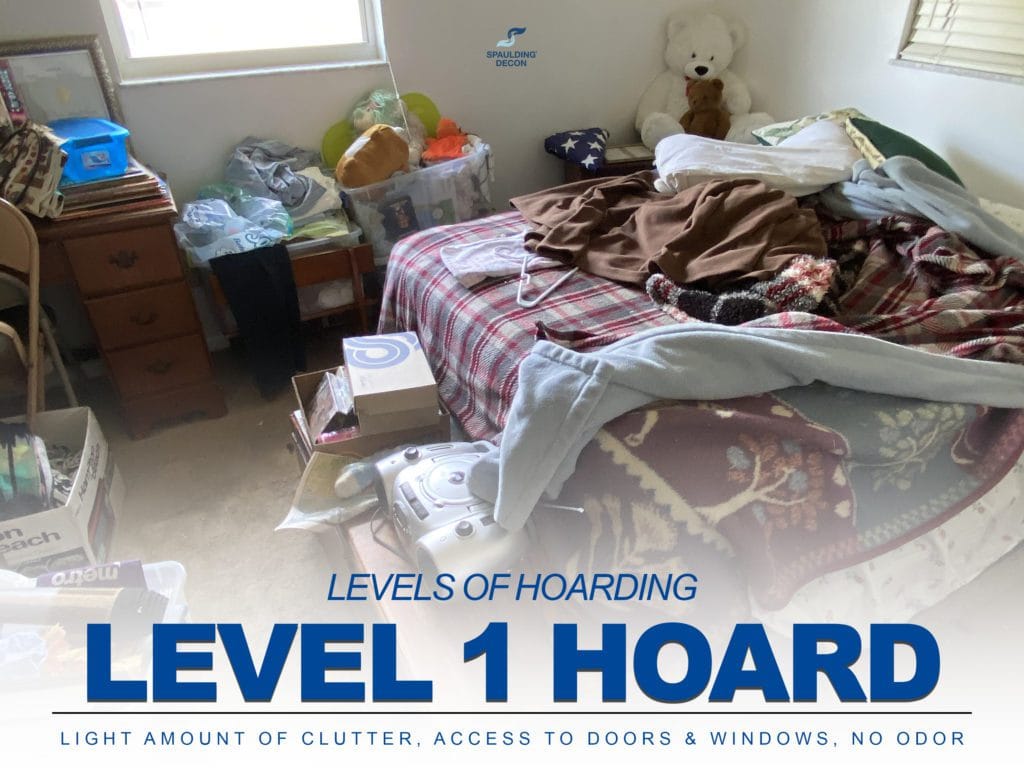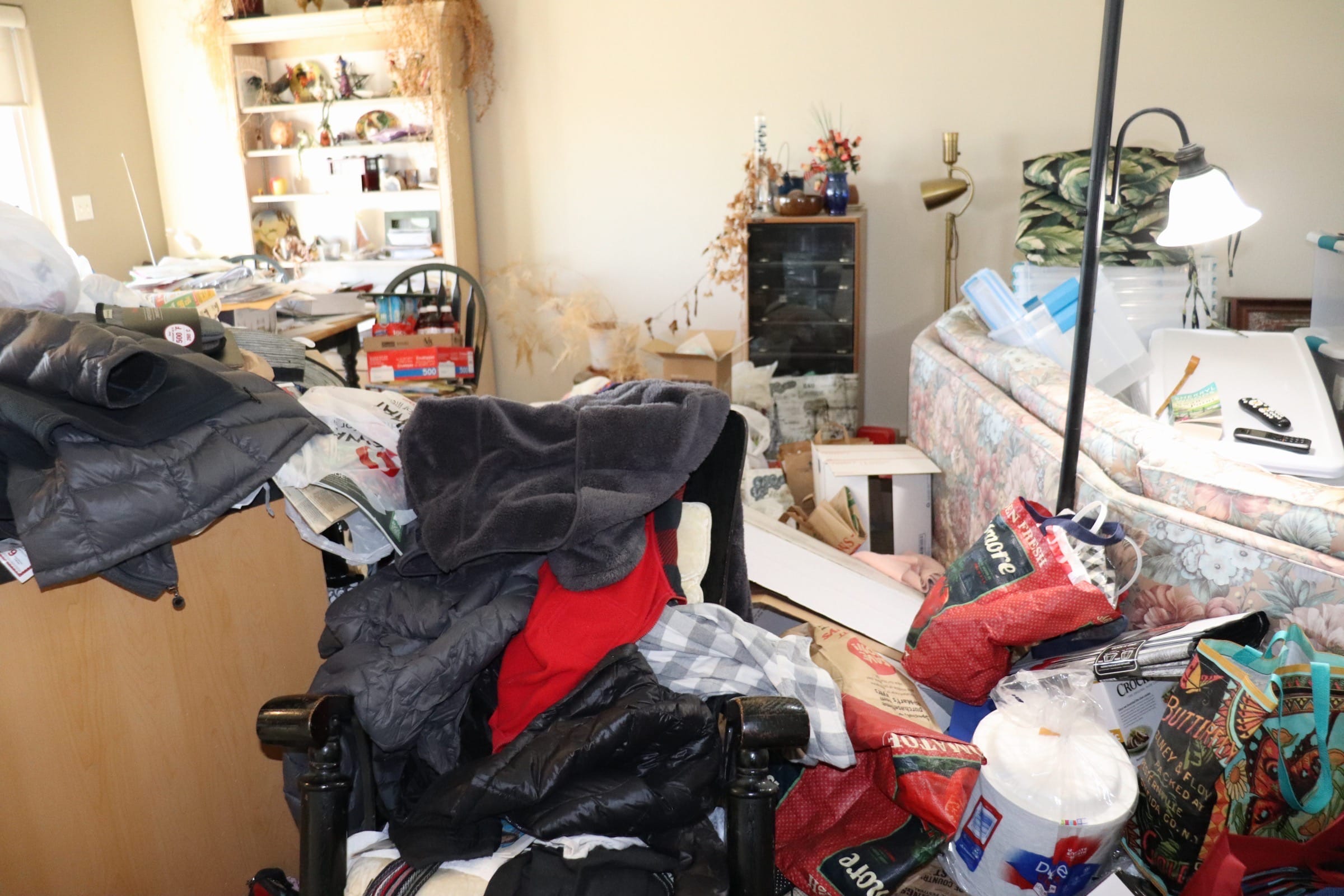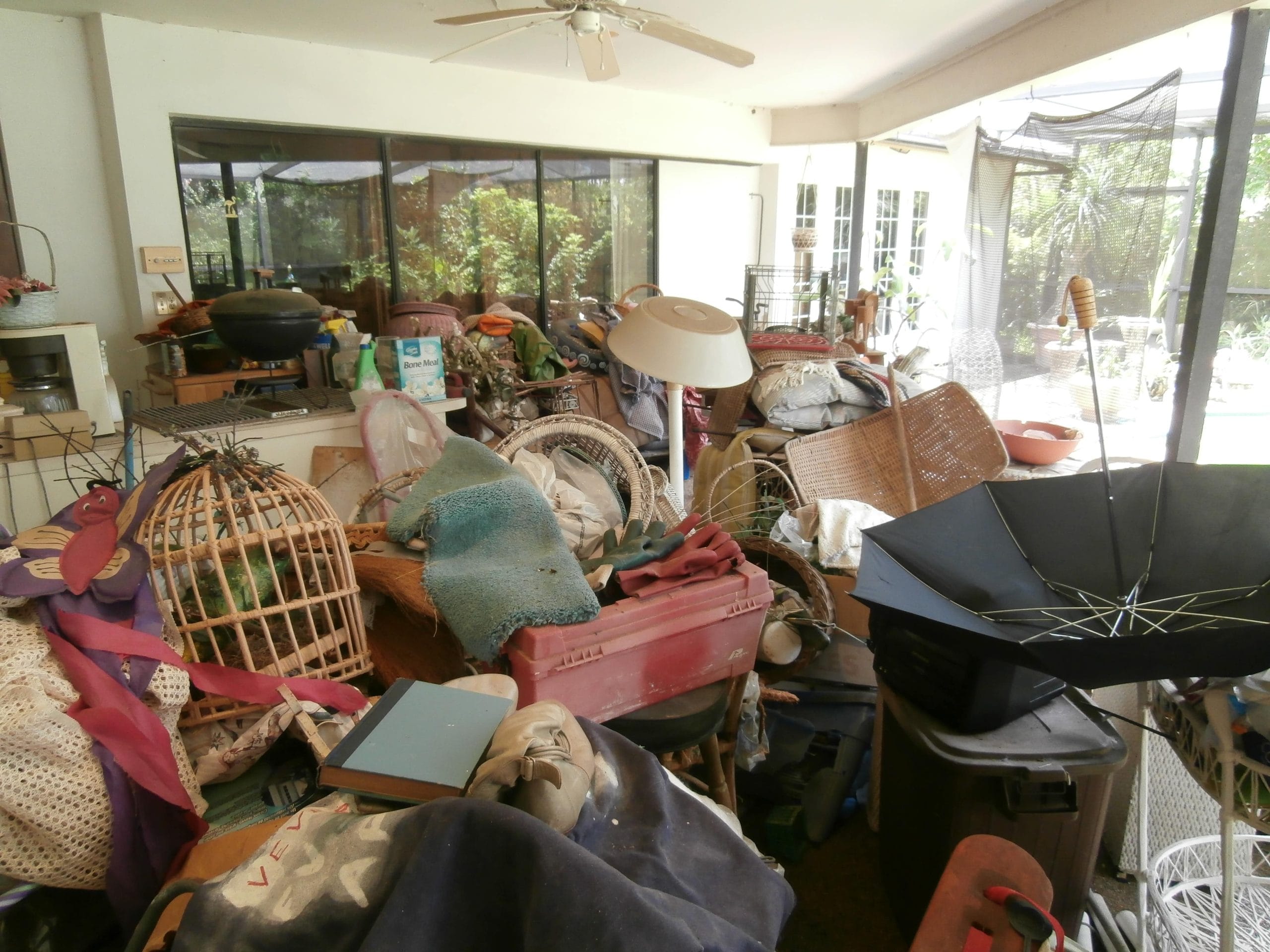What is Level 1 Hoarding?
Level 1 hoarding is the least severe category on the Clutter-Hoarding Scale, and it often goes unrecognized by both outside observers and the hoarder themselves. Unlike advanced hoarding stages, Level 1 hoarding does not create health hazards, obstruct walkways, or significantly impact daily living.
Signs of Level 1 Hoarding
A Level 1 hoarding environment typically includes:
- Difficulty parting with redundant items
- Excessive shopping for items already in the home or not needed
- Accessible stairs, doors, and windows
- No noticeable odors in the home
- Little to no visible clutter on surfaces or in walkways
- Sanitation and cleanliness exist within the home
Did you know? The Institute for Challenging Disorganization (ICD) has created a five-level scale for hoarding classification. Level 1 represents the least severe case, while Level 5 is the most extreme, often involving hazardous living conditions.
Understanding Hoarding Disorder
Hoarding is a serious condition that involves the obsessive collection and storage of items that others would deem redundant or worthless. An overabundance of pets is also classified as hoarding.
The ICD’s five-level scale evaluates which problems exist in a hoarded household. As a person moves through the levels, the indicators discussed as nonexistent in Level 1 will become more pronounced.
While the lack of apparent indicators may hide the fact that a hoarding situation is occurring, it is essential to try and recognize the behavior so it can be curtailed before it escalates to Level 2 hoarding. Understanding each of the criteria used to identify hoarding and how they appear in a Level 1 hoarding household can help protect loved ones or neighbors from an escalated and unmanageable hoarding situation.
Concerned About Hoarding? Spaulding Decon provides expert assessment and cleanup services. Call us today!
Common Behavioral Patterns of Level 1 Hoarding
Difficulty Parting with Redundant Items
A level 1 hoarder will have repeats of the same object in their home, and sometimes this repetition is excessive. For example, a drawer may contain 35 forks, yet the hoarder cannot part with a single one even though no one else lives with them. They assign a potential need to this accumulation of objects and experience anxiety at the thought of parting with some of the repeated items.
Excessive Shopping for Items Already in the Home or That Are Not Needed
An obvious sign of level 1 hoarding is excessive shopping. Even when the households needs are met, a hoarder will have the compulsion to obtain even more stuff to put in their house. If a person has 15 cans of baby formula, but there is no infant in their life, that is hoarding.
Shopping Tip: If you find yourself repeatedly buying items you already have in abundance, try implementing a shopping inventory list to track purchases and avoid unnecessary accumulation.
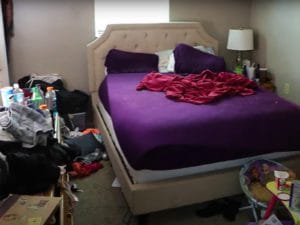
One of the ways to determine if a hoarders love for shopping is a problem is to analyze the financial consequences that shopping is creating. While not all hoarders will experience financial hardships due to their need to shop for items, it is not uncommon for an excessive shopper to accumulate objects even when they cannot afford them.
Stairs, Doors, and Windows in the Home Are Accessible
Although some object accumulation takes place inside the hoarding person’s housing, there is no blockage or obstruction of stairs, doors, and windows in the dwelling. The hoarded items are still contained in more suitable areas in the home, so fire exits are not blocked.
There Are No Noticeable Odors in the Home
While a level 1 hoarder may have a little trash or animal waste accumulation in the house, there are no permeating or rancid odors in the home. Sometimes in more advanced hoarding situations, the rotting garbage, food debris, and biological waste cause the entire house to stink. A level 1 hoarder not only does not have that situation occurring, but they may also be disgusted by the possibility. This is because there is a notion in the hoarders head that they are not hoarding. After all, they keep their livable spaces clean.
Little to No Visible Clutter on Surfaces or in Walkways
While there is no visible clutter in walkways or on all the surfaces in the home, evidence of over-collecting will still be present. There may be plenty of clean counter space in the kitchen. However, one might notice that there are eight cookie jars, three blenders, and four sets of plates tightly stacked in the cabinet.
Did you know? Many Level 1 hoarders meticulously organize their collected items to maintain an appearance of tidiness, even when storage spaces are overflowing.
Sanitation and Cleanliness Exist Within the Home
Some Level 1 hoarders even fixate on how clean and sanitized their home is to deflect their obsessive collections.
Toilets and other drainage systems will be fully functioning, floors will be maintained, and animal waste will be controlled. There may be litter boxes or dog training pads in the home, but they are only in up to two locations with feces contained in and on the proper receptacles. Carpets will not be covered in stains, nor will they have ground-in dirt and debris. All surfaces will be wiped clean, and there is not an overabundance of dust accumulation.
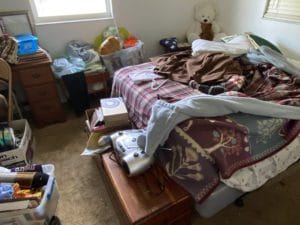
Why It is Important to Recognize Level 1 Hoarding?
Hoarding situations escalate over time, and curbing the behavior early is best to avoid a catastrophic hoarding situation. While level 1 hoarders show few signs and symptoms, it is essential to recognize the beginning of their obsession with intangible items so intervention can occur before the situation worsens. It is also helpful to remember such a low level of hoarding, so it is easier to identify when the hoarded household has reached a higher level.
Frequently Asked Questions (FAQs)
Q: Is Level 1 hoarding considered a serious issue?
A: While Level 1 hoarding does not create immediate safety hazards, it can be a precursor to more severe hoarding behaviors. Identifying and addressing it early can prevent escalation.
Q: How can I help a loved one exhibiting Level 1 hoarding tendencies?
A: Encourage gentle decluttering habits, open conversations about their attachment to objects, and suggest professional counseling if necessary.
Q: What’s the difference between Level 1 and Level 2 hoarding?
A: Level 1 hoarding maintains functionality and cleanliness, whereas Level 2 begins to show signs of mild clutter accumulation, minor home maintenance neglect, and pet waste issues.
Need Help?
After all, hoarding is a recognized mental health disorder, and as such, delicate handling of the situation is required.
Our licensed and certified professionals can handle any hoarding situation. Regardless of what is happening at the location that has you worried, we are here 24/7 to help you. Call us at 866-726-2316.
Find a Hoarding Cleanup team nearest you: Spaulding Decon Locations
